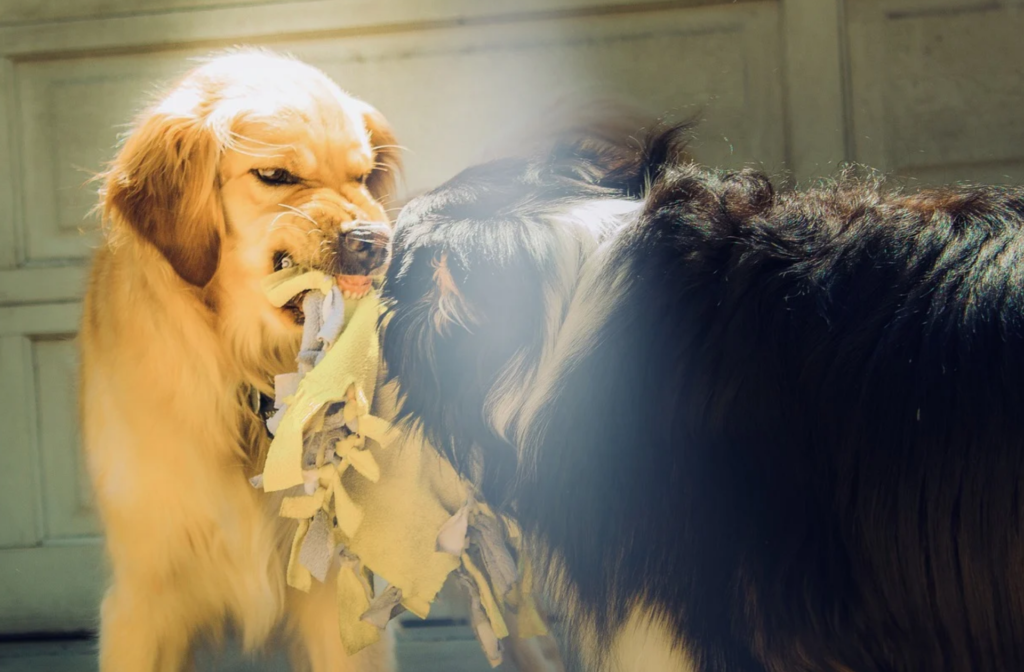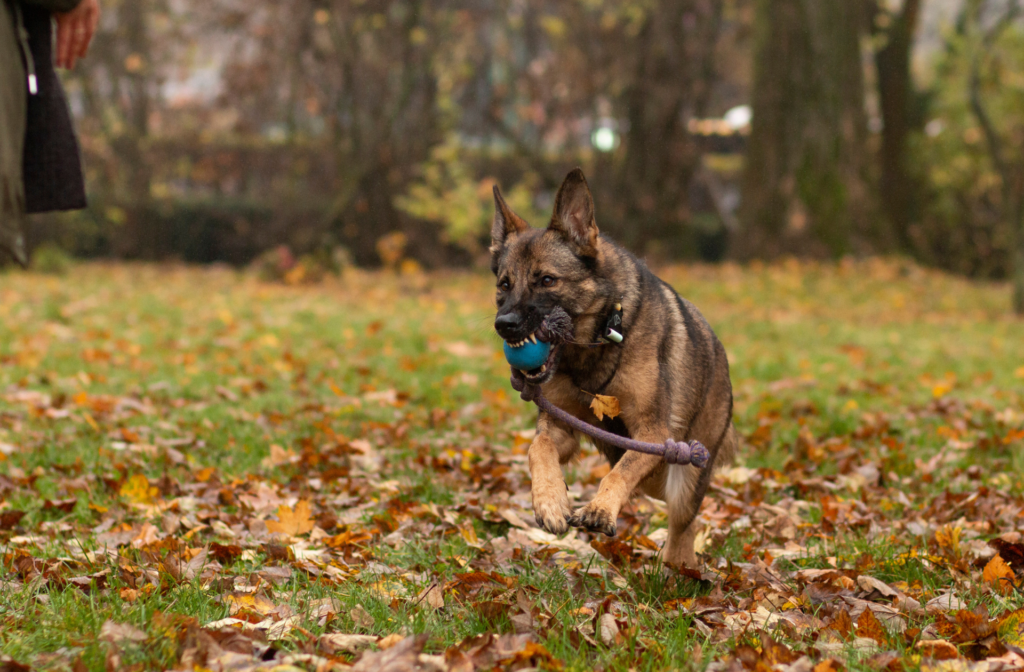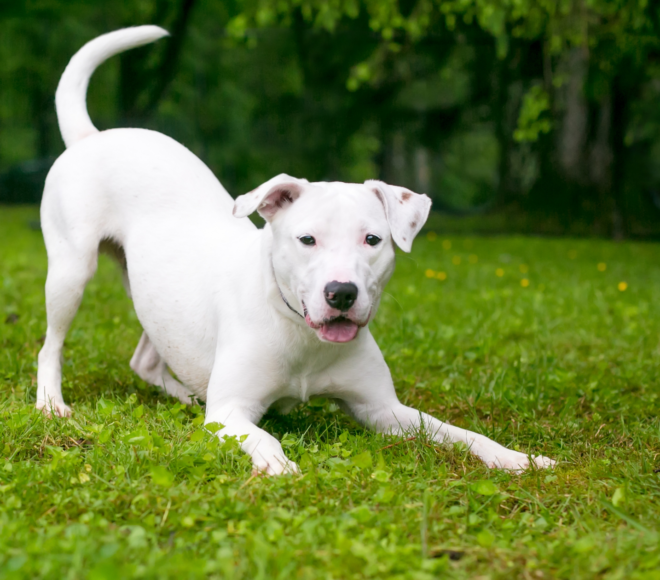First of all, I want to point out that there is no single and ultimate solution to a dog’s aggression problems. There are so many factors that should be taken into account when designing a behaviour plan for a particular dog that you simply cannot base your work on advice taken from the internet. No webinar or behaviourist course can replace a live consultation.
Therefore, it has to be stressed that if you have an aggressive dog and you encounter a problem while working with it, the first and essential thing to do is to contact a good and trusted dog behaviourist, who will help to assess the problem and choose the right methods.
Who is a dog behaviourist?
A dog behaviourist is a professional who helps the owner solve dog behaviour problems. Such help very often involves understanding the dog and its emotions, building a relationship with the dog and ensuring that its needs are met and that it feels safe. One of the chief problems reported to dog behaviourists is precisely the problem of aggression in the dog’s behaviour – either in the dog-to-dog or dog-to-human interactions.
Aggressive behaviour in dogs
One of the most common causes of aggressive behaviour is a sense of threat or danger. This is known as anxiety-related aggression. When a dog is afraid of some object, for example, a human or another dog, it sends signals towards the object to maintain distance (it doesn’t want the object to come closer) or to increase distance (it wants the object to move away). These signals can be at first very subtle, for example, a hard stare or gentle growl, but they can also escalate into stronger and more pronounced signals such as a growl accompanied by barking and running towards the anxiety-provoking object. Anxiety-related aggression is the most common reason for dog owners to seek help from a behaviourist. Fear and the need to act in self-defence (also when, for instance, pain is inflicted on the dog), but also the impossibility of getting out of some uncomfortable situation (when, for example, it is afraid of some person and there is no possibility of getting away from it) seem to be a completely justified reason for using threatening, aggressive signals. If you would like to learn some more about anxiety-related aggression, then I highly recommend Piotr’s webinar – Agresja lękowa [Anxiety-related aggression].
It is worth mentioning that other kinds of aggression include: competitive aggression (between males), territorial aggression (in defence of one’s territory) or hunting aggression (involving some of the dog’s hunting behaviours), but they are less frequent in the context of problems reported to behaviourists to seek their help.

Learning to communicate with dogs
Dogs boast a wide range of aggressive signals – some very gentle and subtle, some very clear and blunt. Learning the meaning of these signals and reading the dog’s body language is crucial when working with an aggressive dog (or any dog for that matter). In discussing aggressive signals, we often refer to the canine ‘ladder of aggression’ with subtle signals such as yawning or licking the flews at the bottom of it and the bluntest signals such as grasping with the teeth and biting at the top. It is worth learning these signals, watching dogs, listening to various analyses of dog communication in practice, and checking if our dog hasn’t already started sending us the subtle signals before it starts growling and snapping its teeth. Unfortunately, some dogs have, due to their experience, already completely abandoned sending the subtle signs in situations that aren’t comfortable to them. This is because these subtler signals were never respected, and only the snapping of teeth made the thing provoking the dog’s anxiety move away. This is why it is so important to get acquainted with the dogs’ body language and to interpret it appropriately so that you don’t make your dog behave in a way that will surely cause him a lot more stress and unnecessary negative emotions. The brilliant thing is that we can now explore dog communication without even leaving the house! Piotrek and Zosia have led amazing webinars in which they analysed dog communication in videos of dog interactions – I highly recommend them for further expanding your knowledge.
Reading the dog’s requests and harmonising with it
It is worth emphasising that dog language includes much more than just aggressive signals. It also includes a lot of other messages towards us. These can very often be requests for help and taking the dog out of some situation. It is very important to read these requests, respond to them, and respect them when working with an aggressive dog. Such request could be signalled, for example, by stopping or getting in our way when we are walking towards another dog. It could also be a sideways glance in the direction the dog would rather go to avoid confrontation with a disturbing object. If we follow the dog, i.e. harmonise with it, we will certainly enhance its feeling of safety with us and its trust in us and perhaps avoid many conflicts during our walks.
Support
Every dog is different, and, consequently, every one needs a different kind of support when they have difficulty coping with something on their own. There are some dogs for whom carrying an object (a tug toy, a ball or a stick) makes them feel a little better. There are also some dogs eager to redirect their emotions towards a tug toy, for example. For other dogs, the most helpful thing may be to have their owner crouch down and give them some social support in a difficult situation. It is worth looking for solutions, and the best way to do this is to try different things and observe what brings our dog the most relief.

Emotional discharge
It is worth remembering that every difficult situation for your dog involves a build-up of emotions that need to be released somehow. It is therefore worth allowing the dog to let these emotions out so that it can relax to some extent and regain at least some degree of emotional stability from before the incident. For example, in the case of a dog that has difficulty passing by another dog, it is a good idea to follow up such an incident with a little game of tug or sniffing out and finding things in the grass. Both of these activities can help your dog ease its emotions. Every dog is different, and it is important to find out which solution is right for your dog. The important thing is that if we leave the dog to these emotions, it’s much more likely that, in case the difficult situation repeats after some time, our dog may already have a lower tolerance threshold and react aggressively much faster than just the moment before.
The satisfaction of needs
Working with an aggressive dog is not only about acting in difficult situations. It’s also about having a holistic approach towards the dog and considering whether all its needs are being met. Does it have a place in the house where it can rest and relax peacefully and fall into a deep sleep during the day? Does it get regular meals, and isn’t anxious over when and if a meal will be provided? Doesn’t it have to compete for a bowl with another pet in the house? Are its needs to bite, lick, chew, and tear satisfied? Does it feel safe at home, or is there something that constantly worries it? These are the questions to ask yourself in the context of any dog and try to cater for all their needs accordingly. A dog that does not have these satisfied can be more nervous, frustrated but also tired and less tolerant in many situations.
Seeing a vet
It is also worth mentioning that aggressive behaviour can sometimes also be caused by pain felt by the dog. In such a case, its increased irritability is often the only indication that something is wrong. A routine check-up is a very important part of caring for every dog and sometimes the key to finding the cause of aggressive behaviour. It is therefore always worth having its body examined, especially if it suddenly changes its behaviour.
Summary
Living with an aggressive dog is not easy. It often requires a lot of sacrifice and dedication from the owner. From my personal experience, I can say that it helps a lot to accept your dog along with all its fears. We should understand that we might never reach the perfect state. This does not mean giving up but rather working on small goals. This allows us to focus on the here and now, not set the bar too high for the dog (and for ourselves) and enjoy all the micro successes. Accepting the situation makes us start to relax and become less tense and frustrated ourselves, and believe me, this has a huge impact on your dog’s well-being. Last but not least, I would also like to recommend the course Terapia Psów Agresywnych , where Piotrek elaborates on the above-mentioned issues and discusses a few additional topics concerning working with aggressive dogs. But remember! As I wrote at the very beginning – nothing can replace a live behavioural consultation, while courses such as this should only be seen as a form of support and a way of gaining a wider perspective on the subject of aggression in dogs.

 Log in
Log in

